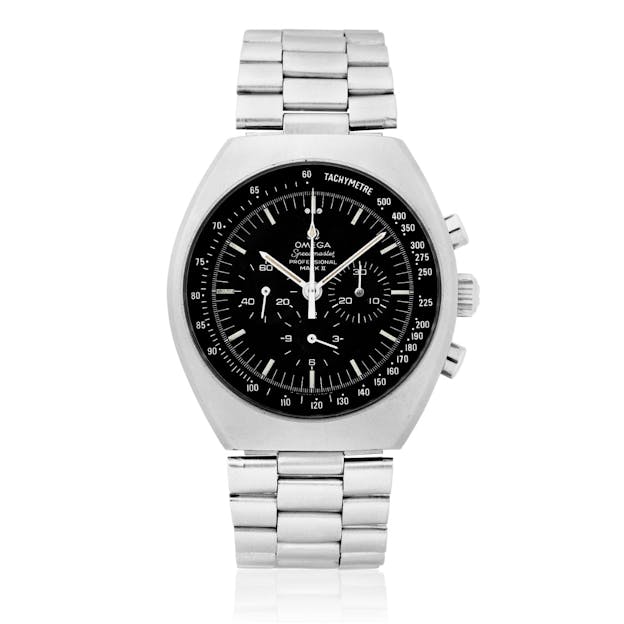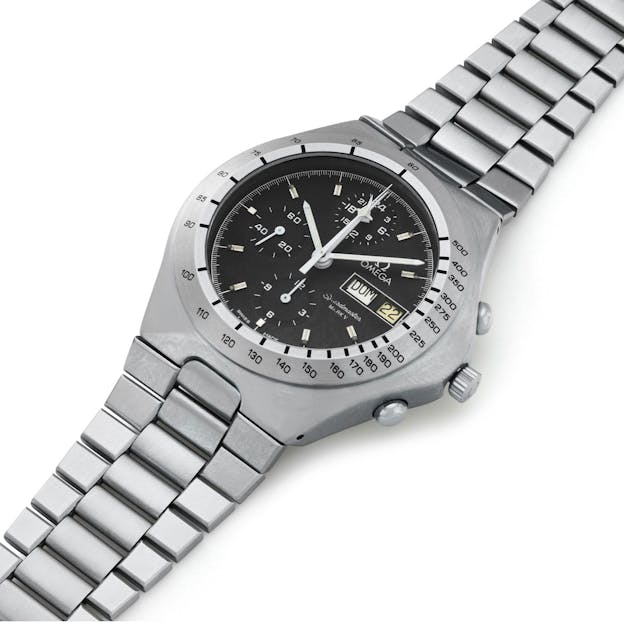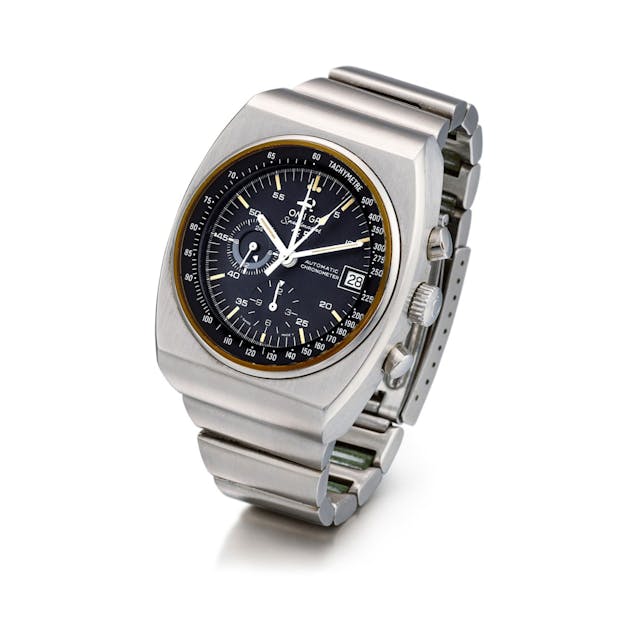Speedmasters Without the Moonshot: Uncovering the Overlooked Speedmasters
Venturing beyond the lunar-legend reveals a fascinating array of remarkable non-Moonwatch variants that deserve attention.
It’s 1998 and my 3rd grade teacher is drawing shapes on the board. Geometry — I loved geometry. The interplay of shapes in our world, the real life application of all the numbers was mesmerizing. Well, this is at least the way I remember the moment that shook my core. She turned her to the class of antsy sugar loaded, Rocket Power obsessed, germ ridden children, she smiled showing her lipstick and coffee stained teeth and said, “all squares are rectangles but not all rectangles are squares.”
That’s when I knew I was done with math. Made the switch to the letters and never looked back.
What Exactly is a Moonwatch?

So what in the name of Great Odin’s Raven does this have to do with watches? Well, because all Moonwatches are Speedmasters but not all Speedmasters are Moonwatches.
I am sorry if I just ruined your love of Speedys or at the very least Speedy Tuesday. But it is true and we can’t run from what is true and absolute in this world. Sometimes a cool slap of reality is healthy and helpful.
All right, enough hyperbole and conjecture, let’s get to it. To clarify the misconception around Speedmasters let’s first define a Moonwatch, and no it is not a Bioceramic quartz watch with a printed Snoopy on it. A Moonwatch is essentially the Speedmaster Professional model — it must be manual wound and either have the caliber 321 or 861/1861 in it. As well, purists such as myself, believe it is only a Moonwatch if it has the hesalite crystal not sapphire but opening up that debate is like asking my wife what she wants for dinner.
What isn’t a Moonwatch?
By this definition any automatic Speedmasters are removed from the Moonwatch conversation, any reduced sized Speedmasters are removed, any co-axial Speedmasters are removed, any LED/digital Speedmasters (such as “The Other Space Watch,” the Skywalker X-33 Solar Impulse), Olympic edition Speedmasters, “Mark” Speedmasters and any bedazzled Speedmasters must be removed. This gives us 194 different non-Moonwatch speedmasters to which we can analyze. That is way too many to actually review and discuss, however, buried in that agglomeration of Speedmaster models are a few gems and a few gripes. (Is this a new series? Gems and Gripes by GG).
I must note that the Moonwatch — as an owner, to me, is a right of passage. Like scoring your first basket in youth basketball, falling in love for the first time, burning your first grilled cheese, it is something all collectors must face and go through.
To me, there is no watch collection without a Speedy and all the YouTube talking heads saying it’s overpriced due to the manual movement, hesalite crystal and lack of date complication, are people who go against what is popular for the sake of argument, not for the sake of true love of horology. The Speedmaster regardless of your love of space or your financial status is a top 5 most iconic watch next to the Sub, Royal Oak, Nautilus, and in my humble opinion the Fifty-Fathoms.
What are the best non-Moonwatch Speedmasters is a loaded question fraught with biased opinions but that’s why we write isn’t it?
The Gems and Gripes of the Non-Moonwatch World

First, there is no more overrated version of non-Moonwatch Speedmasters than the Ultraman. Yes, it has its place in pop culture lore but no it’s not worth the wild numbers it garnishes at auction. Currently Ultraman models can be found between $14,000-$20,000, which is a hell of a markup for a pop of color. It is an orange chrono hand. That is essentially it. Feel free to argue but it’s overhyped and overrated as a non-Moonwatch.
My other biggest gripe has to be the Alaska Project IV. It’s a digital watch. That is all I really need to say. It’s not a Moonwatch and its existence is something I have to accept. If you love it, thumbs up to you, but for me, it’s just so far off from what a Speedmaster should be that I can’t help but be slightly annoyed by it.
A Family of Marks

Now that we got that out of the way. It’s imperative that we dive into the “Mark” edition Speedmasters. According to my account there are technically 9 different “Mark” editions that have been released, although there are only 4 “models”. These all generally follow the same design ethos of a barrel shaped case — which to me is so 70’s it hurts, but you can’t not love it at the same time.
The first “Mark” Speedmaster was the Mark II released in 1969 and produced until 1972. I am well aware that we started at two. Don’t ask, no one 100% knows, well maybe someone knows but do we really need to know why they skipped a Mark I? Not really — sometimes we just need to accept the unknown and move on. That said, the best explanation I have seen is that Omega considered the first Speedmaster that went to the Moon as the first “Mark”.
There are four Mark II co-axial in various colorways in existence, including the ref 327.10.43.50.06.001 (in all honesty I included this reference number and only this one just due to the sheer fact I have wild gripe about how long Omega reference numbers are and it just felt right in some form of journalistic masochism) which has stunning red racing details around the minute track. The Mark II co-axial’s were released in 2014 as a modern rendition to the classic released 46 years prior. To me this variation is the epitome of a brand beginning to take risks and an elite example of 70’s design.

In 1971, Omega introduced the Speedmaster Mark III, a groundbreaking timepiece that revolutionized the series with its automatic movement. This innovation marked a significant milestone for the Speedmaster line. The Caliber 1040, a collaborative effort between Omega and Lemania, powered the Mark III with a two-register chronograph movement. Building on this success, the Speedy 125, released two years later, took the Caliber 1040 to new heights by becoming Omega’s first automatic chronograph to earn the prestigious certified chronometer designation (more on this gem in a moment).
Notably, the Mark III was produced in three distinct case styles: the Flightmaster-inspired Mark III, the Seamaster-style Mark III, and the square-cased Mark III. Interestingly, these versatile cases found their way not only into Speedmaster production but also into the Seamaster collection, showcasing their adaptability and appeal.
The Speedmaster Mark IV emerged in 1973, only to have a brief production run until 1974. This enigmatic timepiece seems to blend elements from its predecessors, marrying the Mark II’s case design with the Caliber 1040 movement from the Mark III. In all honesty, it is just an odd watch in the lineup. A notable innovation is the watch’s modular design, allowing the crystal, dial, and movement to be removed as a single unit. The Mark IV boasts a bit of a cult following, mainly due to its rarity.

The Calibre 1040, introduced in 1970, emerged in the wake of a historic triple achievement in watchmaking – the simultaneous debut of the world’s first automatic chronograph movements: Calibre 11, Zenith El-Primero, and Seiko 6139. Notably, Albert Piguet, a renowned chronograph expert at Lemania, drew inspiration from a pioneering prototype he had created in 1946, decades ahead of its time. This innovative design, initially set aside as unnecessary, served as the foundation for the Calibre 1040.

However, for the ultimate in rarity, look no further than the Speedmaster Mark V. This elusive timepiece was crafted in 1984 exclusively for the German market, with a mere 40,000 examples produced. By Germany I do want to clarify, specifically West Germany. Its limited availability and regional exclusivity make it a true gem for collectors. The Mark V’s quirky charm is further enhanced by its housing of the renowned Caliber 1045 movement within a delightfully unconventional case (I honestly don’t know how else to describe the case). As these watches become increasingly scarce, encountering one is a rare privilege.
The 125

There are essentially three variations of the 125 — the OG (which we will focus on here), the Pulsometer and the Telemeter. The first model was released in 1973 to commemorate the 125th anniversary of the brand. Like the aforementioned Mark IV the 125 also is constructed of a two piece case. On the dial the Omega logo and wording as well as the 125 marking were all applied steel while the “speedmaster” logo and seconds were painted.
But what makes this watch really freaking cool is what’s under the hood. As per usual there is a lot of back and forth in the doldrums of watch forums online about the differences between the 1040 and the 1041. Essentially the 1040 was Omega’s first automatic chronograph. The 1041 was a slight improvement on this caliber.
The Omega Caliber 1041, a 17-jewel masterpiece boasting a 28,800 A/h frequency and 44-hour power reserve. The Caliber 1041, however, is based on the Lemania 1341 (as opposed to the 1040 which is based on the 1340), with notable enhancements. What sets this movement apart is its status as the world’s first automatic chronograph to achieve chronometer certification. Notably, Omega reserved this caliber exclusively for the Speedmaster 125, making it a unique and coveted find among collectors.
The caliber 1041 was never used in another watch.
For a long time rumors swirled around the 125 that only 2,000 models were made. Despite there being evidence of communication from Omega to collectors that there were only 2,000 made, they were never officially numbered leading to some suspicions. However, recent extracts from the Omega Museum only state that the watch was a special edition for the anniversary. This now causes many to assume the production number is actually higher than the 2,000 once rumored.
Non-Moonwatch Speedmasters are Worthy of the Same Love
Before I began my research for this article I was a purist. Moonwatch or nothing. Hesalite, manual, closed caseback, or go kick rocks (with sandals on preferably). However, there is beauty in what is different, there is history and stories to be found in the unconventional. The Mark series, the 125’s are just as much a part of the Speedmaster story as the ref 145.
However, due to the unfortunate reality of word counts and modern-day attention spans I could not dive into every variation of non-Moonwatch Speedmasters I hoped. For instance the ref. 3820.53.26 39mm Day-Date Mark 40 — which after the 125 would probably be my third favorite in the 194 non-Moonwatch speedy lineup.
Non-Moonwatch Speedy’s tend to take a backseat to the Moonwatch proper and the question we must all ask ourselves as collectors is why? Generally they all had very short production times and the unconventional aesthetics caused many collectors to look the other way. I do understand this take because when a watch feels like you are wearing a helmet for your wrist it does make it difficult to become your daily wear.
What I suppose this practice in acceptance has taught me is to not turn up my nose at those rectangles that aren’t squares. They still deserve a place in the pantheon of Speedys.


